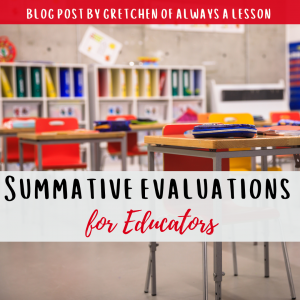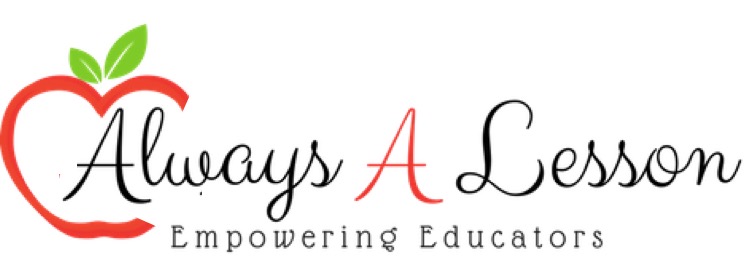Summative Evaluations for Educators
Summative evaluations help educators grow. They happen at the end of the school year and measure two main areas: how effective the teacher is and how much students have learned. Administrators review many kinds of data, such as classroom tests, state assessments, learning goals, informal checks, and evidence of professional learning. The principal then gives a final performance rating, such as “exemplary.” This rating shows how successful the teacher was that year and provides ongoing feedback for improvement.
The Teacher Growth and Development Process
 The following process is ongoing between the leader and teacher. Although the focus for improvement may change throughout the year, the process remains the same. This provides structure to all stakeholders. The goal of this process is to assist the teacher in growing their skillset. Students improve their performance in the classroom as a result.
The following process is ongoing between the leader and teacher. Although the focus for improvement may change throughout the year, the process remains the same. This provides structure to all stakeholders. The goal of this process is to assist the teacher in growing their skillset. Students improve their performance in the classroom as a result.
- Pre- Conference – Teachers can submit lesson plans for an upcoming announced observation or they can co-create a lesson plan with a leader (ie. mentor, instructional coach, assistant principal. This insures a high quality lesson is formed from the start. Feedback is provided to the teacher to make final tweaks before teaching the lesson live in front of students with the leader observing.
- Observation – A leader observes the teacher deliver the lesson to students (ideally this would be the same leader present in the pre-conference, but it does not have to be). No interaction between the teacher and leader should occur as if they are simply a fly on the wall. The teacher teaches the lesson as planned in the pre-conference. This includes any changes due to feedback.
- Post- Conference – Hosting a debrief with the leader and teacher allows for a productive discussion about high quality teaching. The teacher comes to the post-conference after completing their reflection of the effectiveness of the lesson. During this time, professional goals are discussed in addition to the goal for the lesson taught. Strengths are highlighted and weaknesses are prioritized (1-2 areas only). The teacher uses this conversation to gain clarity on teaching expectations, feedback on the lesson itself, and next steps for how to continue to improve their instructional skill.
Collect Evidence of Teacher Proficiency
Teacher proficiency is a term used to describe the level of effectiveness of a teacher’s instruction. Classroom observations alone do not share the whole picture of a teacher’s development. Therefore, leaders need to collect a variety of data to showcase the many ways a teacher has grown.
- Professional Development [PD] Records – Knowing what PD teachers have attended enlightens the leader on what topics they have learned about and should be implementing. Finding patterns within the records will provide clues for next steps
- Communication with Parents– Knowing how often and the methods used by the teacher to communicate with students’ parents is helpful in knowing what feedback to provide to build strong, personable relationships with stakeholders. This also gives credit for going above and beyond requirements to keep parents informed and leverage their assistance in the growth of the child
- Use of Student Data– Understanding how teachers collect, analyze and use data to inform their instruction showcases the level of their skill. If teachers encourage students to chart their own growth, set goals, and advocate for their own learning needs then the teacher is going above-and-beyond the requirement to collect, analyze and use data in their classroom.
- Participation in Growth Opportunities– Teachers should meet with leaders to share their professional goals at the beginning of the year. This helps the leader support growth in that area of interest. Noting what additional opportunities teachers have engaged in to continue to grow in their area of expertise or interest demonstrates a self-motivated, dedicated professional.
Ensuring Everyone Wins
Teachers should understand the coaching cycle, which includes a pre-observation, observation, and debrief. They should take part in these cycles often, even if they are experienced educators. Coaching sessions can be shorter and more focused to save time, especially when leaders support many teachers. Teachers also need to know what administrators look for throughout the year. This helps them see a full picture of their teaching strengths. Sharing clear examples and non-examples builds trust and makes it easier for teachers to succeed by the end of the year.
- Take the guesswork out of the process – Kick off the year explaining the process used, rules of the game, ways to succeed, etc. Allow for question and answer until every teacher feels they know how to succeed fairly in the system.
- Meet regularly– If the only time a teacher is meeting with a leader is at the summative evaluation, something is wrong. Everyone deserves a guide to growth- no matter their years of experience or accolades earned. Throughout the year, the mini touch points allow for teachers to see how the evidence is stacking up, sharing information with the leader they might not have known (ie. conference attended, informal mentorship blooming, etc.). Using the summative rubric as a reference during the check-ins ensures teachers know how to strengthen evidence for their effectiveness.
- Flip the leadership– Teachers have been engaging all year long with the leader about their performance. They can now take the reins and run the conversation. Walking through the summative evaluation rubric, teachers can debate their level of performance. They can back it up with evidence and examples. Leaders will take note of additional information to help make the most accurate decision. Teachers have more ownership in the process and leaders gather additional evidence.. Teachers confidence and desire to grow increases. All of this creates motivated adults who then go on to empower kids int he same way.
Suggested Resources
If you are looking for ways to support the ongoing growth of teachers, check out the suggested resources below.
- Professional Development Topics and Guides
- Instructional Coaching Tools
- Enhancing Classroom Instruction Supplement
The impact of a summative evaluation has a ripple effect that not only impacts teacher proficiency, but student achievement as well.
Want more support? Browse our full collection of printable and digital tools. You can also read more helpful posts on the blog.
GO BE GREAT!

